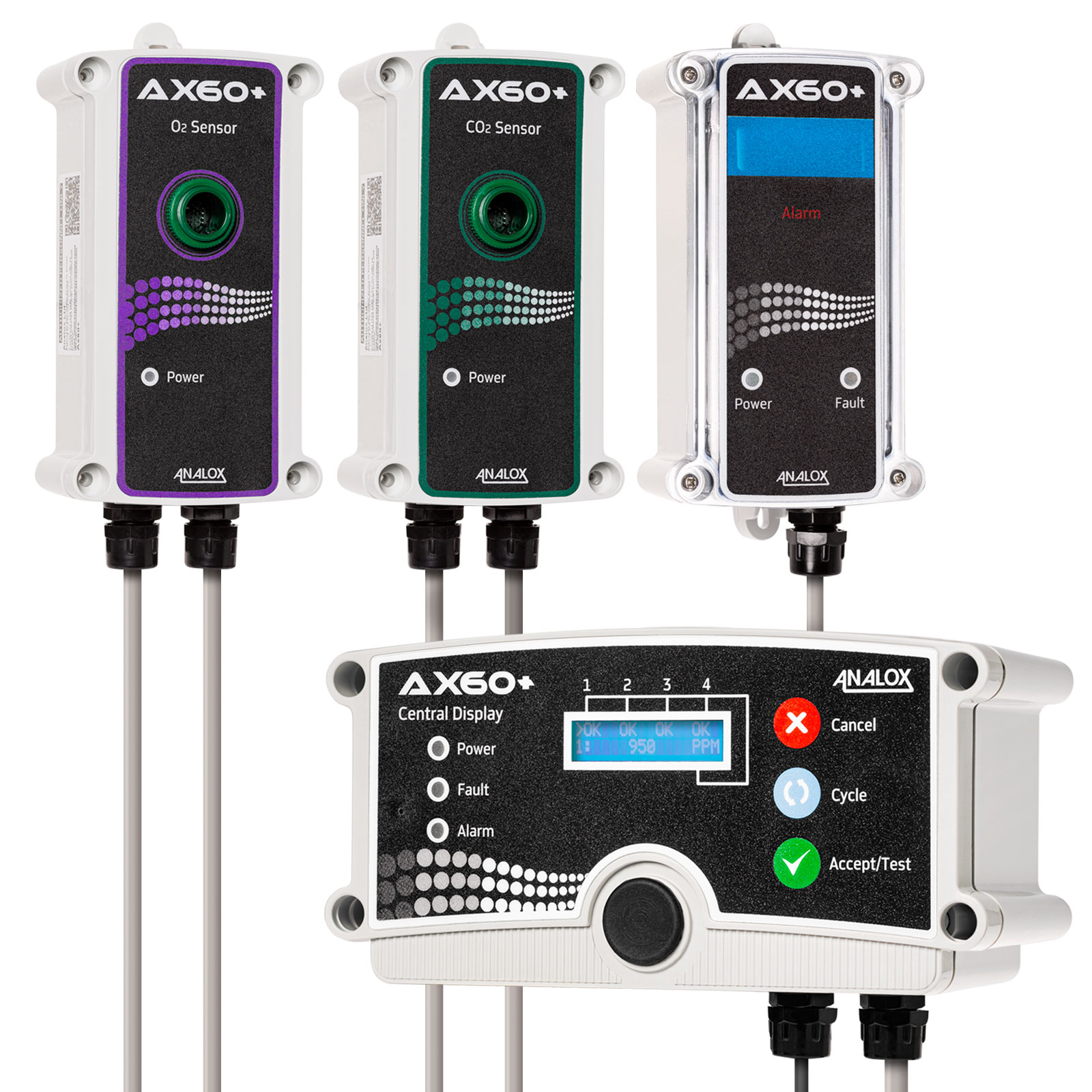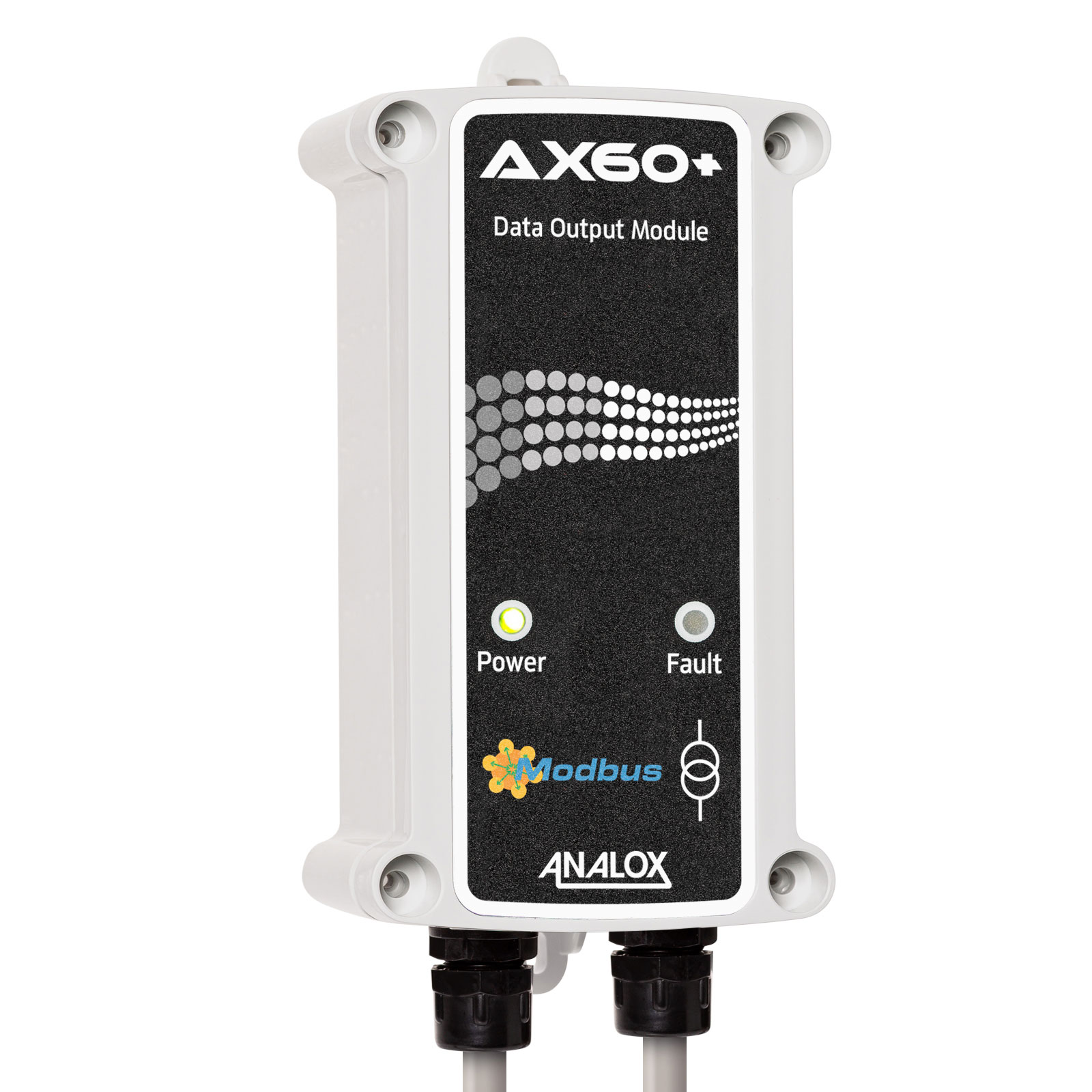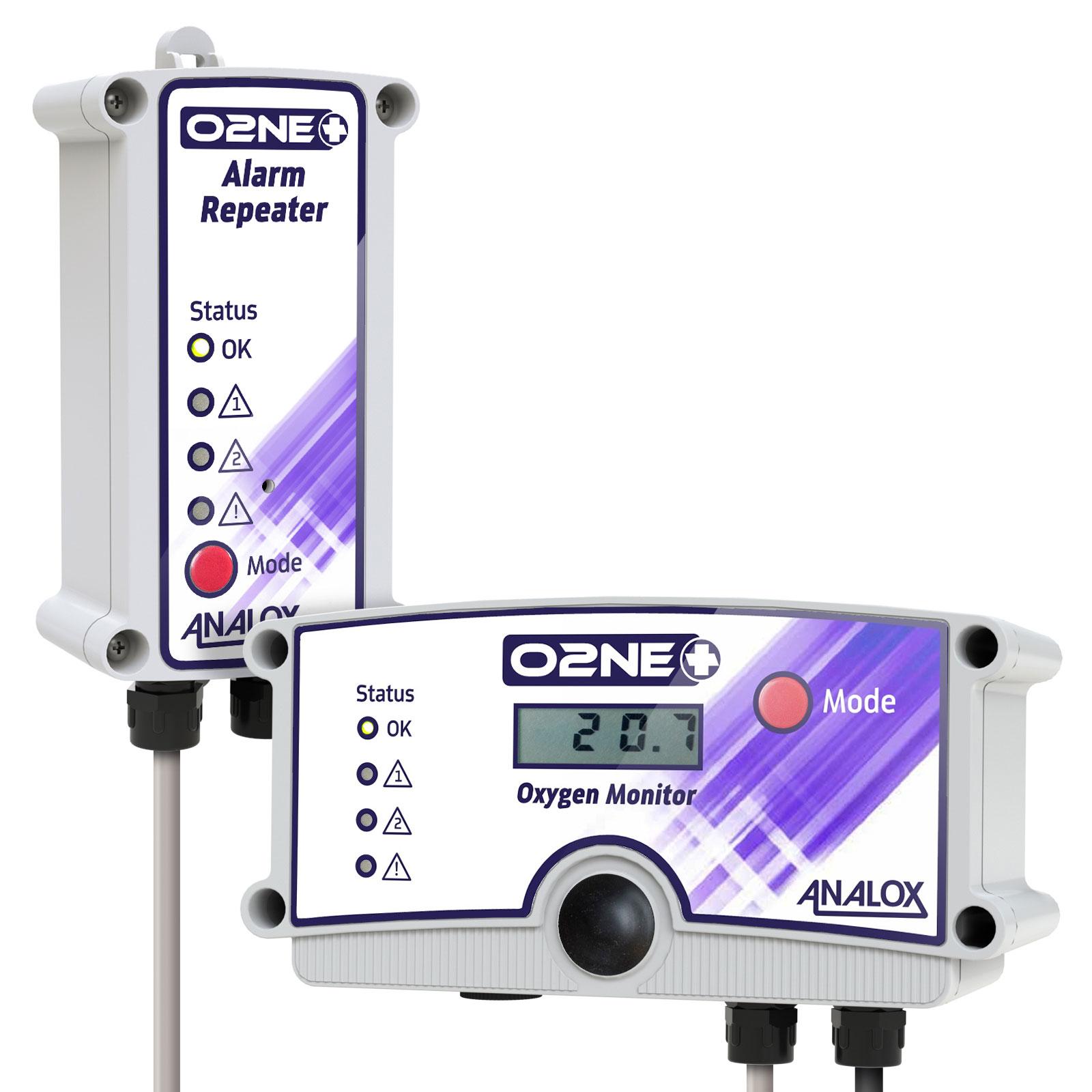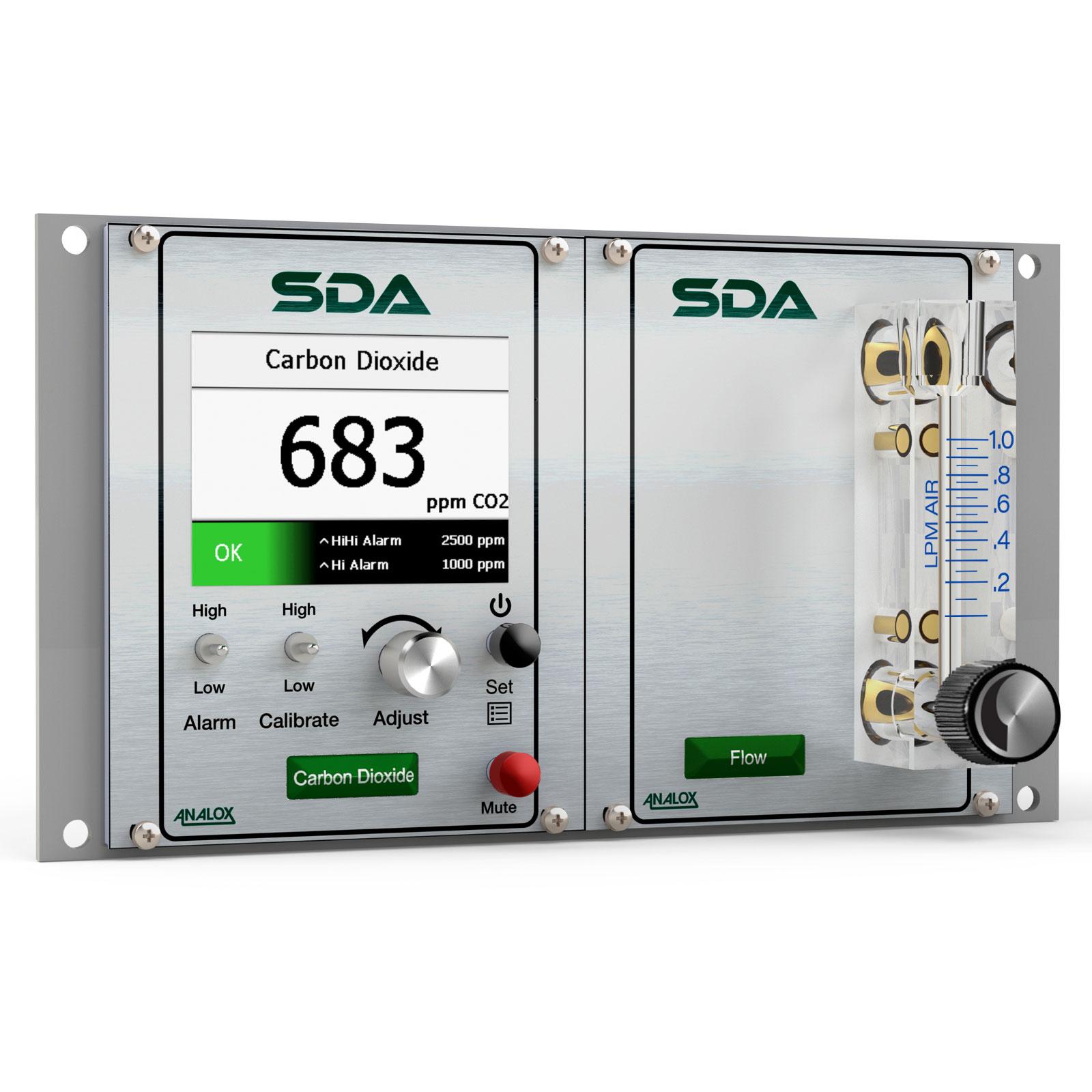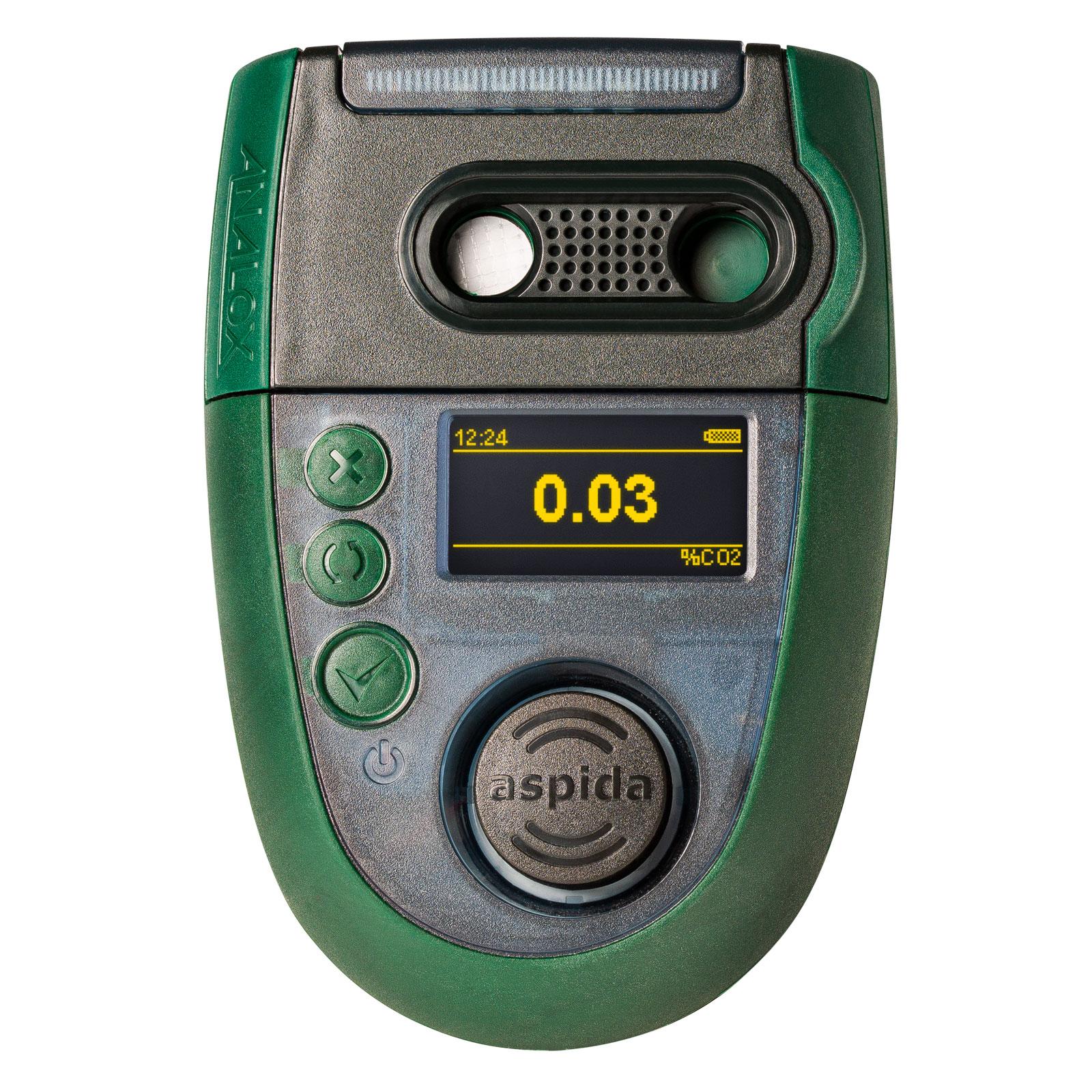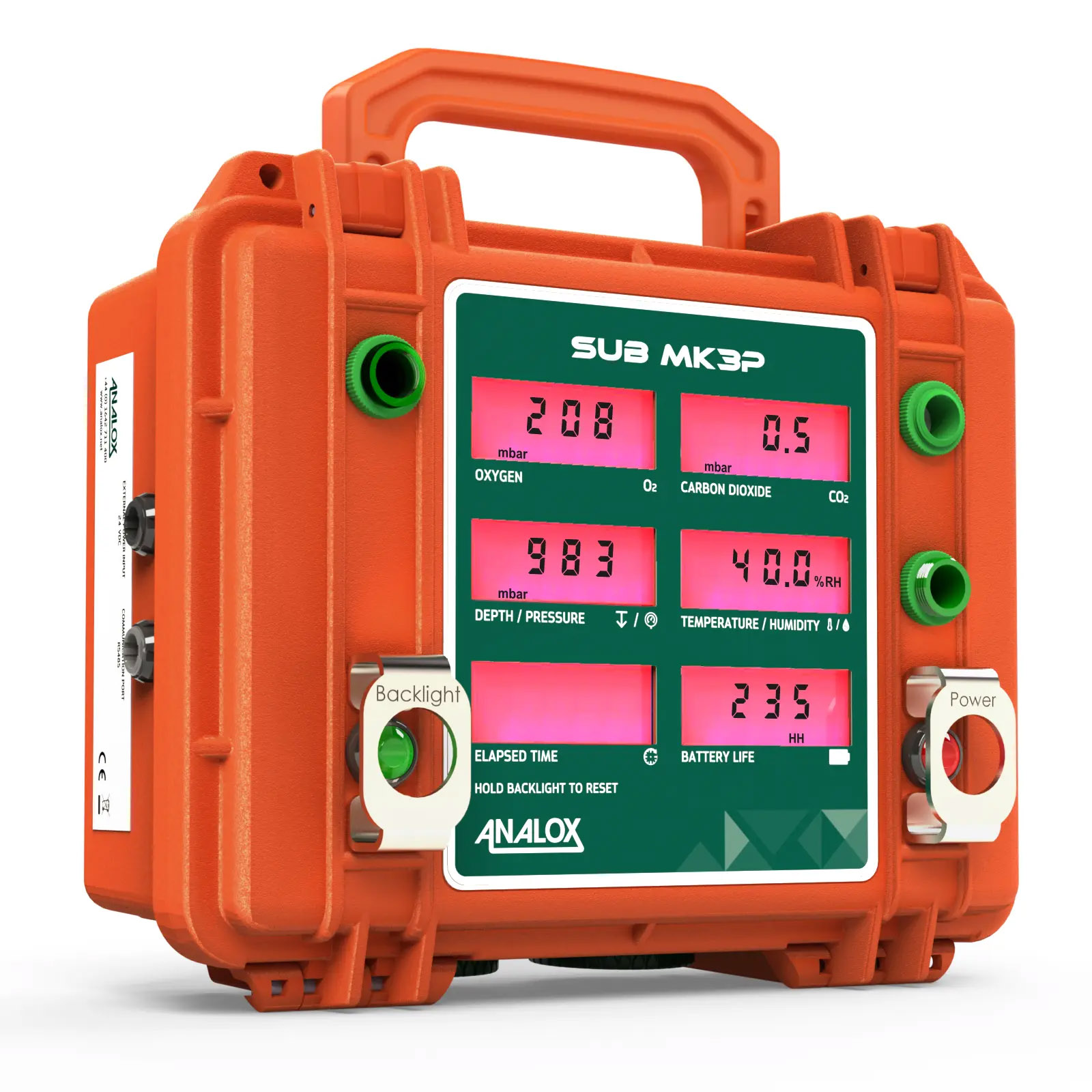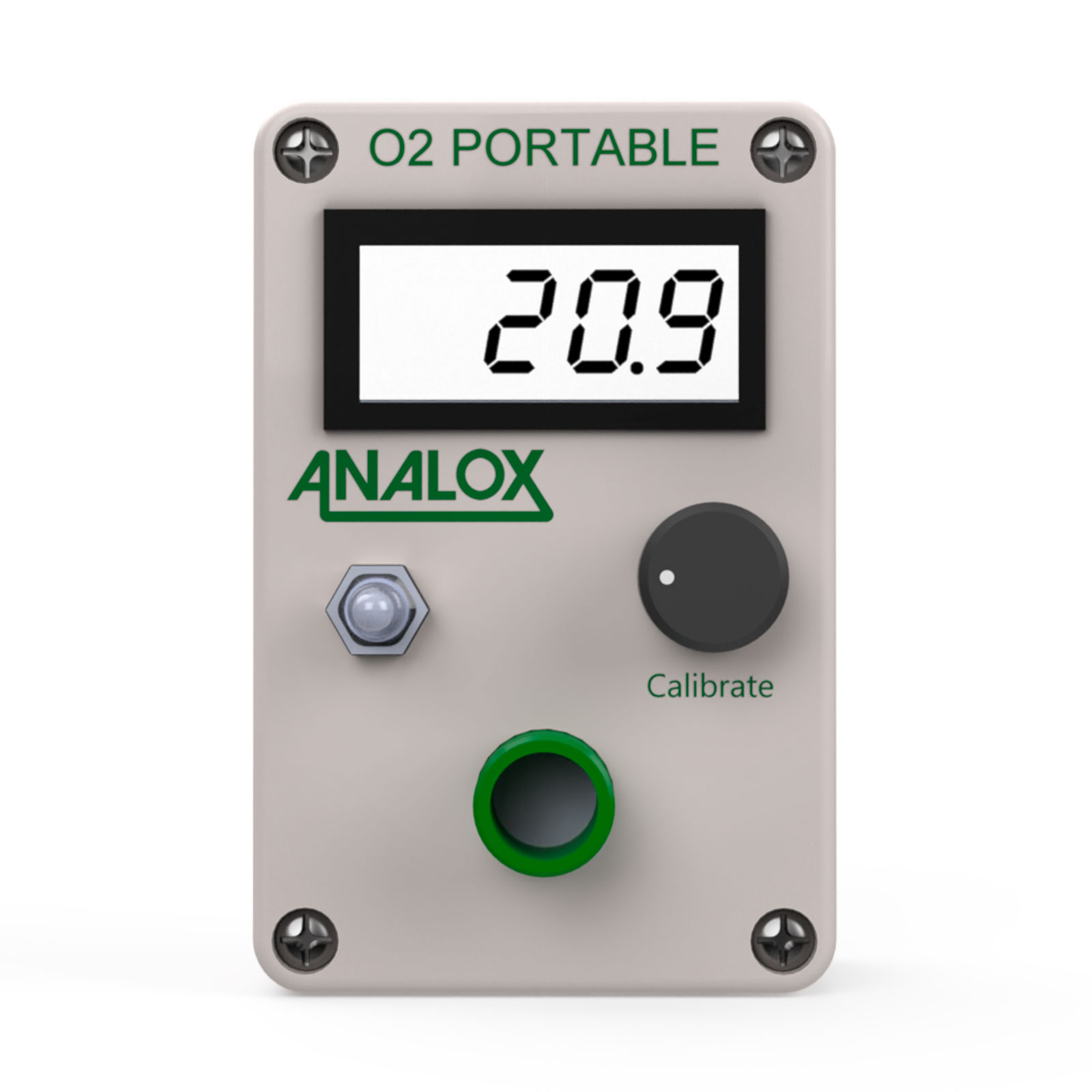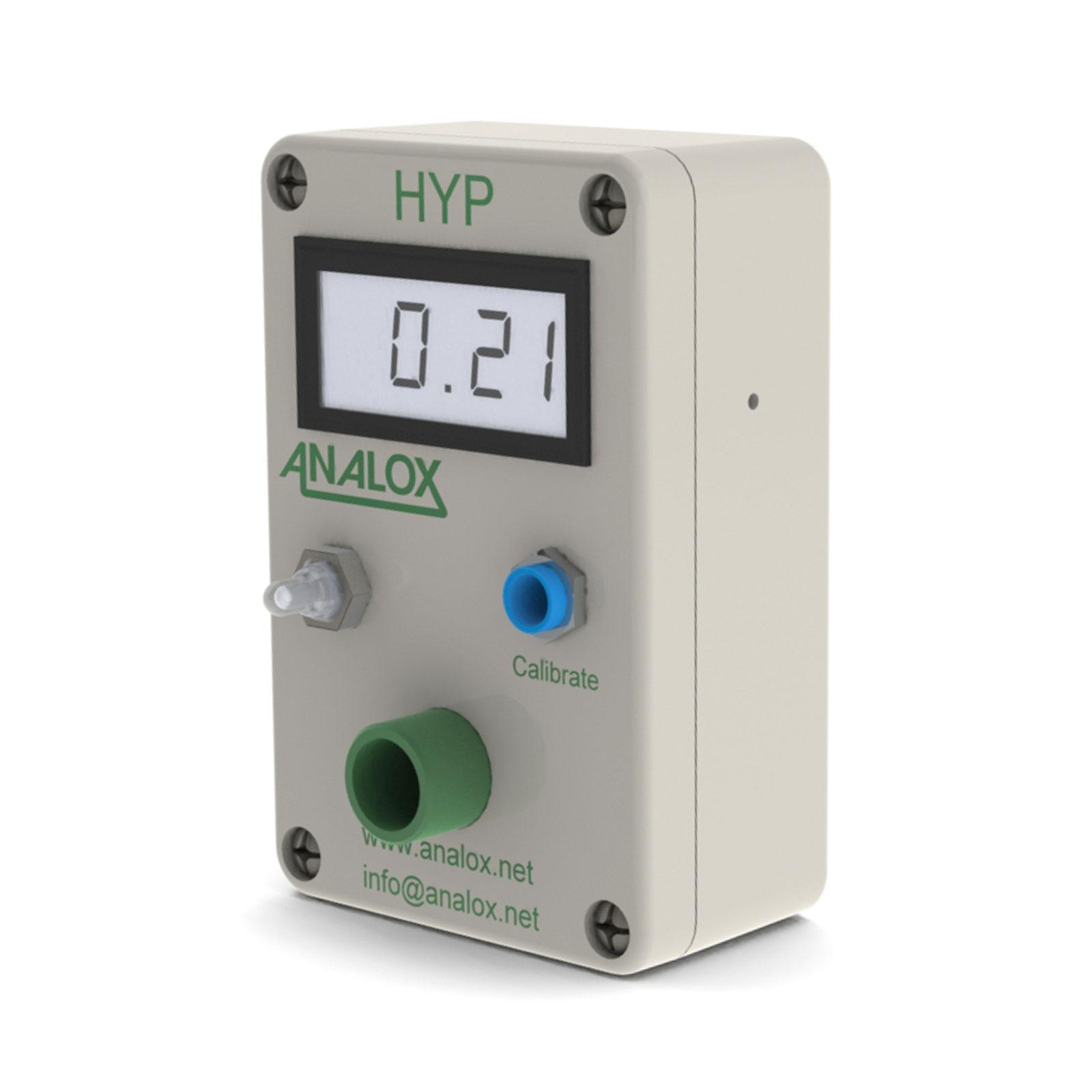Oxygen (O2) constitutes 21% (by volume) and over 46% (by weight) of the earth’s crust and is the most plentiful element.
Oxygen (O2)
Analox provide the following oxygen (O2) gas monitoring and detection solutions:
A configurable modular atmosphere monitoring system for submarines and surface ships.
A multi-gas analyzer to measure: oxygen (O2), carbon dioxide (CO2), carbon monoxide (CO), Volatile Organic Compounds (VOC’s) and Dew Point in compressed air. The unit can be wall mounted or used as a portable system.
If you need a simple, ready to install and cost-effective gas safety monitor – we’ve got you covered.
The Ax60+ is easy to install and already programmed for your local regulations.
The DOM can be retro fitted to any existing Ax60+ installations and provides real-time monitoring of the Ax60+ and communicates with customers remote systems such as a Building Management System (BMS).
A single point wall mountable safety monitor for oxygen (O2) depletion. This uses a partial pressure oxygen (O2) sensor so it is not cross sensitive to helium (He) ingress.
A single point wall mount safety monitor for oxygen (O2) depletion and enrichment that has a ppO2 sensor.
The SDA carbon dioxide (CO2) monitor provides reliable carbon dioxide (CO2) monitoring to maintain a comfortable and safe saturation diving chamber.
A portable, personal safety monitor for both carbon dioxide (CO2) enrichment and oxygen (O2) enrichment and depletion.
A panel mount, safety monitor for oxygen (O2) and carbon dioxide (CO2)
A compact, highly accurate electrochemical oxygen (O2) and NDIR carbon dioxide (CO2) sensor designed for vehicles operating in the upper atmosphere.
The new portable DISSUB monitor continuously monitors partial pressure O2 & CO2 plus pressure and temperature in the escape compartment, you are now able to maintain the unit in the dockyard too.
A portable, cost-effective choice in air diving for spot checking the oxygen (O2) content of oxygen and nitrox cylinders.
The monitor accurately reads the oxygen (O2) from within the hyperbaric environment in line with safety requirements.
OXYGEN SENSOR TECHNOLOGY EXPLAINED
Monitoring oxygen (O2) content is a vital part of any environmental safety program. Whether analytical equipment is monitoring oxygen depletion, scanning for potential contamination, or maintaining atmospheric safety standards and protocols, accurate and reliable O2 monitoring is essential.
What exactly is an oxygen sensor and how exactly does it work? The working principles of any oxygen sensor can be summarized in one of three ways:
- A CHEMICAL REACTION that gives off electrons in the presence of oxygen
- A CHANGE IN LIGHT INTENSITY given off by a fluorescent material when it is exposed to oxygen
- A CHANGE IN WAVELENGTH of sound, light of in a magnetic field as oxygen passes through it
While each of these principles have their strengths and weaknesses, the Analox engineering and development team primarily utilizes three mainstay oxygen sensing technologies that include ELECTROCHEMICAL, PARAMAGNETISM, and ZIRCONIA. Because each technology has different strengths and properties, different monitors featuring the different technologies are used in different applications. Analox currently supplies oxygen sensors, oxygen depletion and enrichment monitors and alarms for industries that include food and beverage, hospitality, medicine, research laboratories, agricultural settings, aerospace and space exploration, submarines, military vessels, along with commercial and recreational diving.
Most oxygen sensors, detectors & monitors are designed to measure between zero and 25 percent oxygen by volume or in breathable air.
The majority of oxygen sensing is done using a simple chemical reaction. The most common process is through an ELECTROCHEMICAL reaction. Oxygen sensors using this process are used primarily to measure O2 levels in ambient air and to measure ultra low trace levels as contaminants in pure gases. The sensor measures the chemical reaction that is created by the electrical output that is proportional to the changes in oxygen level. As this happens, some electrochemical sensors produce their own analog current, meaning they can be self-powered.
This key dynamic makes electrochemical sensors highly sought after because of lower power requirements and lower detection limits. The units are often less directly affected by other gas contaminants. You should also check with the manufacturer if the sensor is cross sensitive to other gases.
They also tend to be the least expensive kind of oxygen sensor.
One challenge electrochemical oxygen sensors have is the chemical process it employs is temperature dependent. The output of most electrochemical sensors in environments with higher temperatures relies on temperature compensation to provide reliable readings over a broad scope of ambient conditions.
Another factor to consider about electrochemical oxygen sensors is that over time the chemical reaction stops, typically between one and three years depending on the sensor design. As the sensor ages it requires frequent recalibration and is not as accurate as other sensors.
Electrochemical sensors are in demand because they are the least expensive sensor due to lower power consumption and the capacity to “self-power”.
Oxygen monitors utilizing electrochemical sensor technology from the Analox Group include the popular AX60+, ACG+, Aspida, SDA Oxygen and SDA Dual Oxygen, SV-MULTISENSOR 2 and the O2 portable.
Another electrochemical oxygen sensor that is used in virtually every car today is ZIRCONIA. A Nobel-winning scientist named Walter Nernst, discovered that if you take zirconium oxide, a pretty common type of ceramic, heat it to 600 deg C and put an electrical circuit across it, then if oxygen is present on one side of the circuit, a charge is created.
Oxygen sensors that utilize Zirconia are another form of electrochemical sensors. Zirconia dioxide in the unit is coated with a thin layer of platinum to constitute a solid-state electrochemical fuel cell. Carbon monoxide, if it occurs in the test gas, undergoes oxidation by O2, forming CO2 and thus triggering the flow of a current. Rather than directly sensing O2, the zirconia sensor instead senses the difference between the concentration of O2 in the normal air and in exhaust gas.
Unlike other electrochemical sensors, Zirconia-based sensors respond extremely well in environments with high levels of heat. The sensors are typically used in automobile engines, medical and laboratory environments. The Analox Venus line of products utilize the Zirconia-based process.
One unique aspect of oxygen is that it has the very unique property of PARAMAGNETISM. If you send oxygen between 2 magnets, the oxygen molecule flips and lines up with the magnetism, just like iron filings. Very few other gases do this . By flipping the gas flow changes and a very small mirror moves a light beam, and this is measured.
This technology is the most accurate of the three and Paramagnetic sensing technology is the choice for industries where accuracy, precision and performance are vital. Paramagnetic sensors are available with a range of 0-100%. This includes gas manufacturing and air separation units (ASUs), facilities, hospitals, food production and modified air packaging facilities. Another major advantage of the Paramagnetic approach is that few other gases can affect the measurement results – this is much less than other techniques.
The Paramagnetic cell in the sensor consists of two nitrogen-filled glass spheres, mounted within a magnetic field adjacent to a centrally-placed mirror. As light shines on the mirror, it is reflected onto a pair of photocells. O2 is naturally Paramagnetic, so it is attracted to the magnetic field, displacing the glass spheres and causing suspension rotation, which is detected by the photocells. The amount of this current is directly proportional to the O2 present in the sample gas mixture. The resulting level of O2 being measured is highly accurate.
Unlike electrochemical sensing technologies, a Paramagnetic cell rarely needs changing and its performance never deteriorates over time, reducing ongoing maintenance requirements and delivering a long operational life. This longevity and reliability does come with a cost as monitors with Paramagnetic cells are often the most expensive sensor option. However, when talking about specialized environments like hospital operating rooms and testing facilities, cost is typically not a deciding factor in monitor selection.
The Analox development team has the technical expertise and capability to create OTS (off-the-shelf) or MOTS (modified off the shelf) options that can incorporate one, two or all three of these sensor options depending on the application and specific environment. For more information on Oxygen sensing technology, monitors, or detectors, contact the Analox Group directly.
CO2 Calculator
There is a common misconception that if using carbon dioxide (CO2) in your facility you can stay safe by using an oxygen (O2) monitor.
The team here at Analox want to dispel this myth so we can ensure you and your team stay safe when using and storing CO2.
CO2 is a toxic gas meaning that even at relatively low levels it can have dangerous effects on the human body. In the event of a CO2 leak, the CO2 will begin to displace the O2 in the area, however, O2 sensors typically have alarm levels set at around 19.5% and 18% so by the time the CO2 has displaced enough oxygen to trigger these alarm levels the CO2 levels will be dangerously high.
If using CO2, your safety monitor must be a CO2 monitor, this is critical so you are alerted to any leaks at levels which still give you time to take action to keep everyone safe. This also helps to save you money as leaks can be addressed early and in the current times of CO2 shortages, protecting this precious resource is key to any business.
We’ve made this calculator so you can check the resultant O2 levels when the ambient CO2 level changes.
SLOT Specified level of toxicity (1 - 5% of fatalities) SLOD Significant likelihood of death (50% fatalities)
Remember: You CANNOT use an O2 sensor to measure CO2 levels. CO2 levels become hazardous to life long before the CO2 displaces enough O2 for it to trigger an O2 alarm.
Subscribe to our Analox Newsletter!
Gain exclusive access to the latest news, insights, upcoming product releases in gas safety and efficiency. Be the first to know about our innovative solutions, upcoming events, and expert perspectives. Sign up today!
Fun Fact
Oxygen was discovered in 1772 by a Swedish chemist, Carl Wilhelm Scheele, who obtained it by heating potassium nitrate, mercuric oxide, and many other substances.


